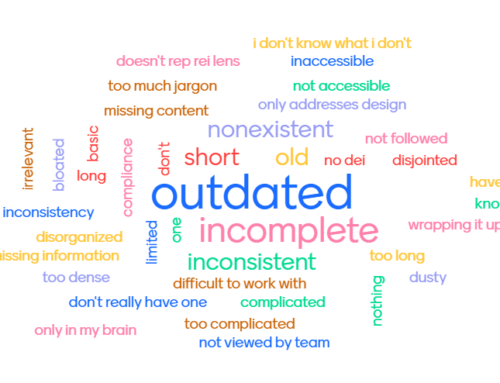 A good content marketing strategy, like any communications strategy, involves integrating all of your communications channels. Joe Ventura, senior communications manager at Reading Partners, shares how his organization got their website ready to handle the increase in visits their content marketing strategy produced. ~ Kivi
A good content marketing strategy, like any communications strategy, involves integrating all of your communications channels. Joe Ventura, senior communications manager at Reading Partners, shares how his organization got their website ready to handle the increase in visits their content marketing strategy produced. ~ KiviGuest Post by Joe Ventura of Reading Partners
Nonprofit marketing, communications, and development professionals are increasingly adopting content marketing techniques to help their organizations attract more donors, volunteers, and advocates. Content marketing has won over many converts in the philanthropic community because it places the needs of our communities up front—and because, unlike traditional marketing strategies, it doesn’t take an oversized budget to be successful.
Content marketing allows organizations to focus their resources on attracting people who are most likely to become engaged supporters and participants. Blanketing your community with billboards and radio ads can earn you millions of “impressions,” but their value is debatable. Visitors who found your organization because a blog post on your site answered a question they were searching for or because your recent video moved them to tears are more likely to develop into lifelong supporters: a clearly higher return on investment.
However, before you dive in, your website needs to be prepped for the visitors attracted and delighted by the content you produce and curate.
Review Your Site Map
Your website is your home base, the hub connecting all of your other communications channels. It’s crucial that before beginning to share content via email newsletters or on your social media platforms, your website is easy to navigate and tells a compelling story about why visitors should support your work.
Before taking to the airwaves on external sites, we focused on revising and restructuring the story we were telling on our website,www.readingpartners.org. We redrew our site map to highlight aspects of our program that distinguish us from our competition. We also paid close attention to how webpages were organized. How easy is it to find the challenges we are working to overcome? Does the description of our program address those challenges?
Choosing the Right Content Management System
A successful content marketing strategy relies heavily on search engine optimization (SEO) to attract visitors to your content. Major search engines score content based on how fresh it is, and fresher content leads to higher search rankings. Your team needs to be comfortable updating your website. To do that, you need to select a content management system that your team understands and is comfortable using.
At Reading Partners, we wanted to expand the team members who could update and add content to our website. While doing research for a potential website refresh, I heard from several colleagues that they didn’t like our current system. We also wanted a CMS that was easy to customize. We knew that our blog would be a key component of our nascent content strategy and our CMS needed to be flexible enough for us to adjust and add features based on how our visitors responded.
In the end, we chose to re-launch our site on WordPress, as many of our team members had used this CMS in other jobs. There are many strong CMSs out there, including stalwarts like Drupal and Joomla, and newcomers like Strikingly and Squarespace.
Yes, You Still Have to Ask: Calls-To-Action
While delighting your supporters with engaging content can lead to return supporters and active ambassadors, the first and biggest hurdle nonprofits face is to help total strangers make the leap. If you want someone to do something for you, you’re still going to have to ask—and ask clearly. Calls-To-Action can take many forms—from inline text with a hyperlink to stylized buttons with images—but they all serve the same function: to turn a stranger into a supporter.
At Reading Partners, we have several goals that we want strangers to take to get to know us, but at the top of our list is to help them become donors, volunteers, or—ideally—both. On every page of our website there is at least one Call-To-Action, often more.
We also employ Calls-To-Action in a longer-term strategy. We recognized that not everyone is going to be ready to donate time or money on the first visit to our website, so we encourage them to learn more about our organization by signing up for our monthly newsletters. When they do, they are giving us something very special: an invitation to start a conversation with them and the means to do it—their contact information. Additionally, we also use our ‘Contact Us’ form to build our community of supporters.
Joe Ventura is the senior communications manager at Reading Partners, a national literacy program based in Oakland, CA. In the past year, Joe has led the organization in the adoption of a comprehensive content marketing strategy focused on increasing its volunteer and donor base. In the first year after adopting a content marketing strategy, Reading Partners increased its followers on Facebook and Twitter by over 100%, increased volunteer recruitment via our website by 15%, and increased the number of unique visitors to our website by over 50%. Read Joe’s earlier post on how he went from marketing skeptic to true believer.






